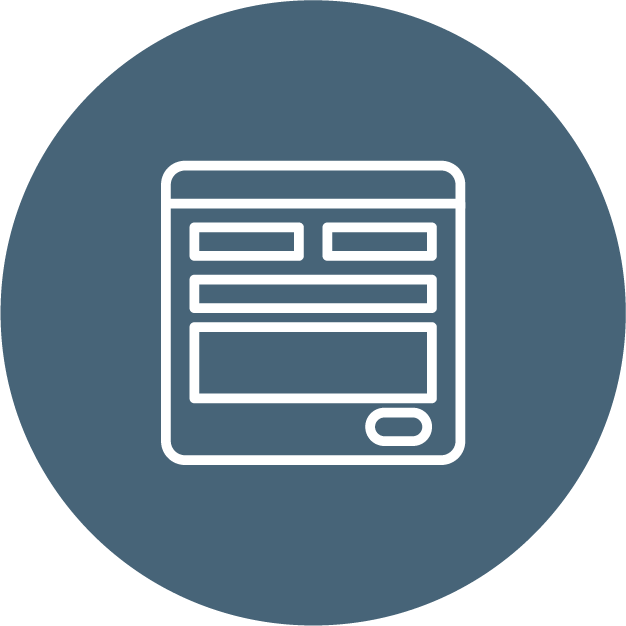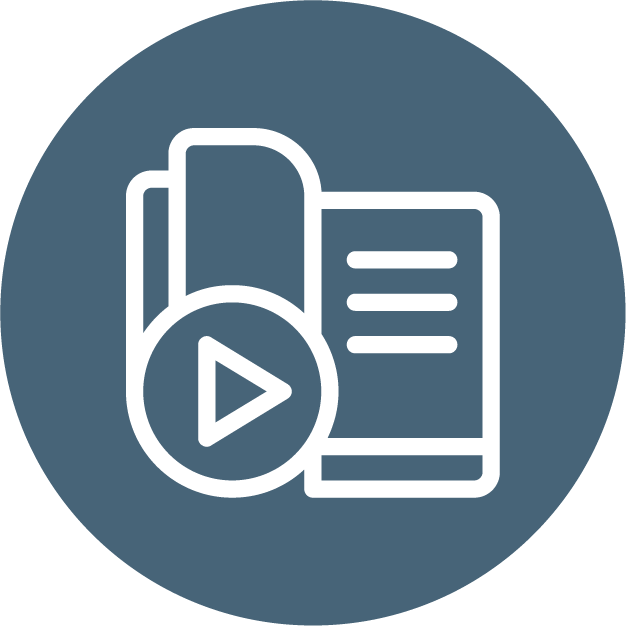How many leads did your website bring in last month?
One? Ten? Fifty? Zero?!
Depending on which digital marketing strategies you’re using, you may be able to count your monthly leads on one hand (or one finger). But with the right approach, you could boost that number considerably.
Lead generation can require a balancing act. Open the faucet too far and you’ll find yourself wading through a bunch of bad leads to find one or two good ones—meaning more work and potentially more frustration in your sales and marketing process.
And that’s clearly not something advisors want. A recent Kitces Research Report found that if financial advisors have to choose between quality and quantity when it comes to lead generation, they choose quality.
Finding the balance between the two can be difficult. Focus too much on one and the other will suffer.
Of course you want to focus on quality, right? Who wouldn’t? The kind of strategies that prize quality over quantity tend to be more of a slow trickle than a steady flow. They require patience and a consistent focus on the long game.
Some leads may be ready to start working with you right away, but people in that situation typically reach out to you—if they need help right away, they’re not going to wait for an invitation.
In order to achieve successful, quality-focused marketing that helps you develop relationships over time, you’ll want to combine multiple strategies, which is why we put together this list of our favorite lead generation tactics for financial advisors.
One thing to keep in mind before we jump in: Lead generation should be used to add people to your email list, not immediately sell to them.
How you nurture leads after they join your list is a whole different story. Even the most quality of leads can be scared off if you try to close the deal immediately.
Now, let’s get started with 10 ideas to improve the amount of leads you get through your website.
1. Add Forms to Your Site’s Hotspots
Every website has a mix of super popular pages and some pages that don’t get as much attention.
Using your analytics software of choice, figure out which pages bring in the most traffic and then make sure those pages have a subscribe form.
One of the best places to add a subscribe form is on the sidebar of your blog. If someone is already reading your blog, subscribing is an obvious next step, and you want to make that next step as easy as possible.
One other category of forms is pop-ups.
You may be thinking, “But pop-ups are annoying.” That can be true, but they also have an average conversion rate of 3%. Besides, you could actually create a non-irritating pop-up – just avoid exclamation marks and busy images. Consider adding a pop-up or banner to your most popular pages.
Another thing to keep in mind is that the pop-up can be for something other than subscribing to your newsletter. You could use it to promote your next webinar, latest ebook, or even a specialized consultation.
 2. Optimize Your Homepage CTA
2. Optimize Your Homepage CTA
Does your website really call visitors to take action now?
A lot of advisors treat their website like it’s a business card – something you hand to a person that describes your business and provides contact info so they can reference it later.
That’s all fine and good, but it’s not taking advantage of everything you could accomplish with digital marketing. To turn your website into the lead generating machine it can truly become, you need to use CTAs (calls to action) that encourage your visitors to take action.
“Learn More” is one of the most overused CTAs out there today, largely because it fits pretty much any situation. In the right context, it can be effective, but the imagery and content around it have to do a lot more heavy lifting in order to explain what exactly people will “learn more” about if they click.
Look at the CTAs on your website. Can they stand alone? Do they inspire action? Or are they vague and forgettable?
Don’t settle for “Learn More” or “Contact Us.” If you tell visitors exactly what you want them to do, they are much more likely to do it. For example, if you want someone to schedule a consultation with you, then use those exact words.
Being direct is always best.
3. Offer High Quality eBooks in Relevant Places
Ebooks are a basic part of any lead generation plan, but a lot of financial advisors just place their ebooks on their website without giving it much thought.
If you write an ebook about optimizing Social Security, link to it every time you mention Social Security in a blog. (Or if you were marketing to advisors, you might write a blog about lead generation tactics for advisors, and then link to your case study about lead generation tactics advisors use).
Whatever you do with your ebooks, don’t just let them collect dust on a library page. Sure, a resource library is a great place to collect everything you produce, but very few people will come to your website and click into your ebook index and just happen upon something that interests them. That’s why it’s so important to link directly to your ebooks at the right places.
Not only does it bring the right attention to your great content, but internal linking, where you link from one page of your site to another, is also an essential part of SEO.
4. Host Targeted Webinars
As you build your email list, make sure you’re segmenting all of your leads in some way that makes sense for your firm.
If one of your primary services is retirement income planning, then you should be finding out relevant info about your leads (age, retirement preparedness) and using that info accordingly.
Once you have a good number of leads on your list who are interested in planning for retirement, put together a webinar on the subject and then invite those leads to expand their knowledge.
You can also run an ad campaign targeting an audience who would be interested in your webinar.
Speaking of which…
5. Run Ads to Subscribe to Your Newsletter
Social media ad campaigns are a very easy way to reach a new audience while still making sure you’re hitting the audience you want.
You can target your ads based on the user’s age, geographical location, income, interests and more (much, much more).
Once you’ve found the audience you want, spend $20 a day for two weeks on a campaign promoting your newsletter.
At the end of the two weeks, if you’re happy with the results, extend the campaign (and maybe even bump your budget up some).
If you didn’t get enough leads, look at how you can adjust your messaging or targeting – or even try running your ads on a different social media channel.
6. Give Away Downloadable Tools
Downloadable tools are one of the most valuable things advisors can provide, which means you can ask for even more information than you would otherwise in exchange for them.
Go beyond email and first name. Ask for investable assets, age, phone number, or something else. Not too much or else no one will download.
Here are a few examples of downloadable tools:
- Budget Spreadsheet
- Calendar – Include important financial deadlines throughout the year
- Checklist – Tax prep, retirement readiness, etc.
The great thing about these tools is they are often easier to create than ebooks and can convert just as well, if not better.
7. Create Interactive Quizzes
Buzzfeed-style quizzes are super popular because they work – and nowadays they’re super easy to create thanks to tools like Typeform and Interact.
Create quizzes that are fun to take while still providing you with useful information. For instance, a quiz titled “Where should you retire?” could include questions about the user’s goals and when they want to retire.
Where you include the lead form is a difficult question when it comes to these quizzes. If someone goes through your entire quiz and then has to put in their contact information before seeing the results, you’ll see a dramatic drop-off in completion rates. But you didn’t just create the quiz for the fun of it – you want to make sure you get something out of it.
Consider putting your lead form at the front of the quiz or even not putting a lead form on the quiz at all. Instead, you could include a relevant CTA on the results page offering an ebook, checklist, or webinar on a topic related to the quiz.
As is the case with so many parts of marketing, there’s no right or wrong answer with this, so test out a few different approaches and see what works best for you.
8. Write a Book and Give It Away
Writing a book is all the rage these days, and it’s not as hard as it sounds. If you take the time to set up a content calendar around themes you understand well, you can easily combine your blogs over the course of a year or two into a full-length book.
Book giveaways require a little more work and investment upfront, so you may not want to open this up to everyone.
If you use lead scoring or some other way of knowing how engaged people on your contact list are, choose a segment of the most active members and offer to send them a copy, or announce your new book on social media and offer to send a free copy to people if they share your post with their friends.
Beyond the digital realm, having a book you can just hand your clients is an incredibly effective referral strategy too. They can give it to their friends, or it can just sit on their shelf as a reminder of how great you are.
9. Add Turnstiles to Your High Quality Videos
Producing video content is almost a given in the world of marketing these days, but financial advisors have mostly been slow to get on board. A recent TD Ameritrade survey found that only 10% are using YouTube.
Just remember: All it takes is a smartphone, good lighting, and an engaging speaker on screen to create videos people will watch.
One of the coolest innovations of video marketing is something called a turnstile. In essence, you let people watch a few minutes of a video and then a form pops up asking for contact information in order to continue watching.
While turnstiles are a cool way to gather leads, it’s important that you only put them on your best videos. If it’s not a high-value video, it’s unlikely anyone is going to submit their info.
10. Risk Number Lead Generation Questionnaire
We couldn’t let this list slide by without reminding you that you can take a risk-first approach to your lead generation. Questionnaires are a proven way to engage visitors on your website, and an even better way to qualify them—and when you can learn all about a lead’s thoughts on risk at the same time, even better. Our high-converting questionnaire asks a simple question encourages users to answer a few quick questions and get their Risk Number (and in return, you capture their contact info and Risk Number, as well).
The Lead Generation Questionnaire consistently outperforms every other lead generation tactic for financial advisors across the country. And the great part is that once a prospect has taken the questionnaire, you know enough about them to follow up with a few relevant emails with more information to nurture the relationship and further qualify them.
Following up with catered content is even easier when you partner with the experts. That’s why advisors look to those like Snappy Kraken, who have curated a plug-and-play marketing campaign built around the Risk Number. There’s nothing better to incite the curiosity of new prospects.
———————————–
That concludes our list of 10 lead generation strategies for financial advisors! Pick one or a few of these to focus on first and start building up a successful, quality-focused funnel that drives real results and new prospects straight to your firm’s site.











 Tip #2 – Send Your Email on Behalf of a Human
Tip #2 – Send Your Email on Behalf of a Human

